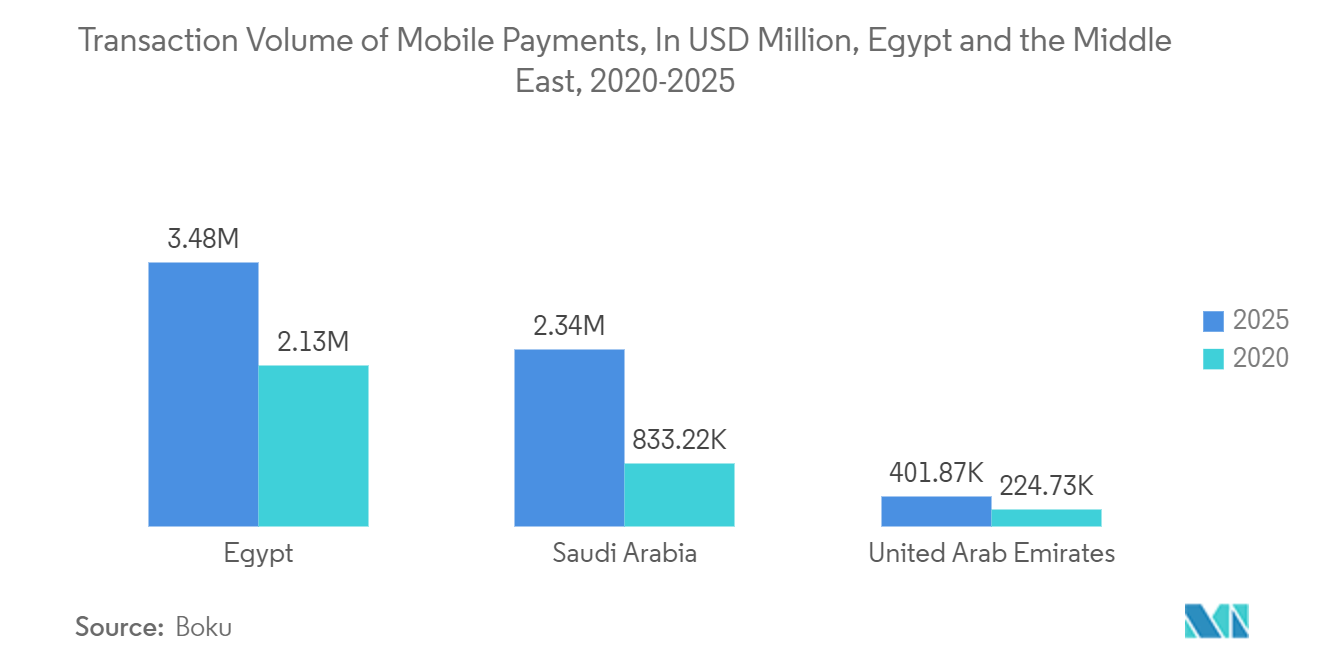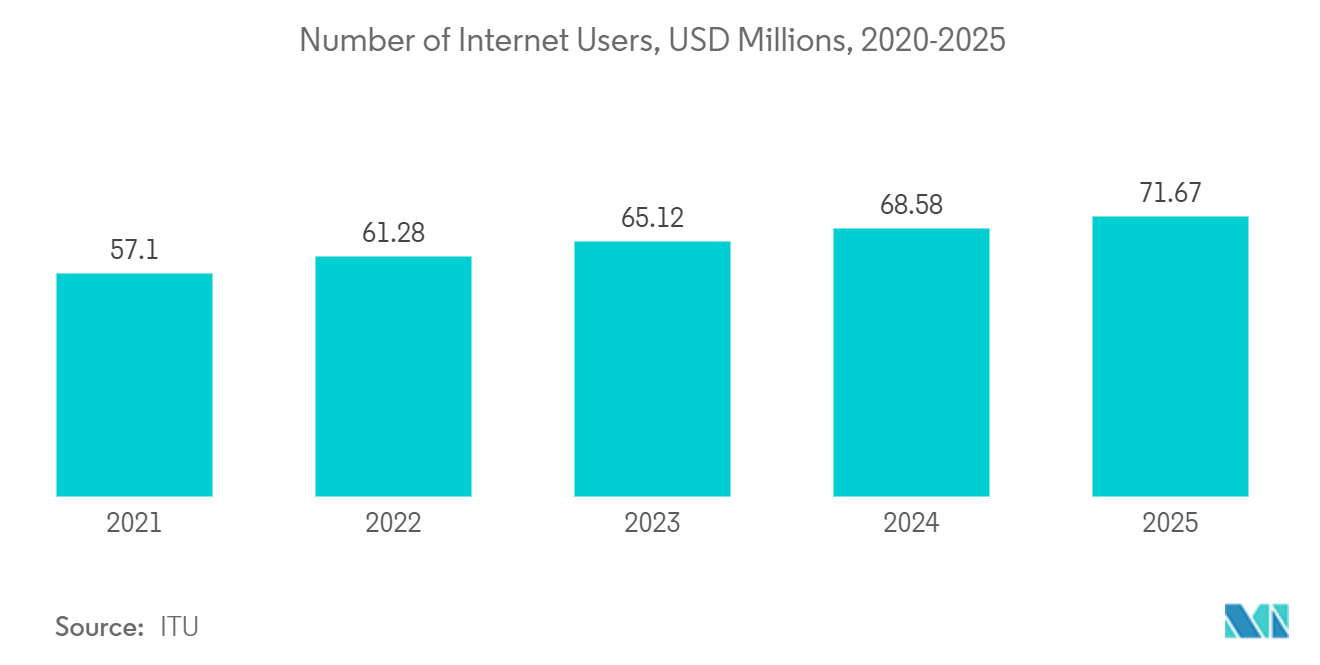Market Trends of Egypt Mobile Payments Industry
Increasing Internet Penetration and Growing E-commerce Market Sector to Drive the Market
- Enterprises are growing in the Egyptian e-commerce business, and the local market is expanding. In recent years, the country's payment industry environment has changed due to an increase in the number of new e-commerce start-ups and development in the e-commerce and banking sectors. Such advancements would increase the country's use of mobile-based payments.
- Furthermore, the Ministry of Communication and Information Technology has developed a strategy to promote cashless payments as part of Egypt's Sustainable Development Strategy, Vision 2030, by encouraging initiatives such as e-commerce and e-government, electronics design, and digital manufacturing.
- Furthermore, using information from the customer's previous purchases across e-commerce sites, regularly presenting them with beneficial suggestions, and suggesting lists of potential targeted acquisitions. Provide clients with personalized bonuses and discounts on things that they genuinely require. When a consumer enters your business, do not miss the opportunity to contact them via mobile application and provide the finest offer.
- With the advancement of mobile technology, secure payment online systems explicitly designed for mobile phones have emerged. Users may make payments via credit or debit cards, net banking, mobile wallets, UPI payments, EMI payments, and other methods. Mobile wallets and UPI charges primarily target mobile consumers and allow them to execute a settlement in a handful of steps, propelling e-commerce development.
- In Egypt, e-commerce was developed at a 33% yearly pace and was predicted to reach USD 3 billion by 2022. Increased Internet penetration, product selection expansion from new local and established regional companies, and improvements in transportation and payment infrastructure are some of the market's significant growth catalysts.

Proximity to Drive the Market
- Mobile proximity payments are mobile payments in which The payer and payee are the exact person's location and communicate using proximity technology (such as Near Field Communication (NFC), Quick Response (QR) codes, Bluetooth technology, and so on).
- Mobile contactless payments are a subset of mobile proximity payments, in which the underlying payment instrument is either a card or a credit transfer. Mobile proximity payments include both customer-to-business and person-to-person payments.
- Furthermore, the widespread use of proximity payment among merchants across the country and the increased use of smartphones, mobile devices, and quicker connection have enabled retailers and customers to perform proximity payment via their cell phones, propelling market expansion.
- Moreover, using the Internet, users may transfer monies from their bank accounts to other accounts on the same platform using person-to-person (P2P) technology. Although P2P is considered a distant payment, some providers have expanded their offering to include in-store payments, called Person-to-Business (P2B). Quick Response code (QR-code) is a mobile advertising technique that has been developed to distant and proximity mobile payment. It is based on a two-dimensional barcode that encodes information to make contactless transactions using a code reader on a smartphone.


